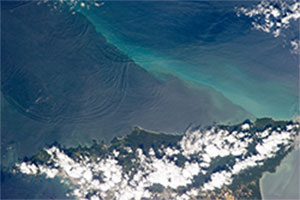The Ray Charles effect

Simply sign up to the Life & Arts myFT Digest -- delivered directly to your inbox.
People who are missing one sense sometimes seem to develop extra sensitivity in others: blindness, for example, may lead to more acute hearing – what has been called the “Ray Charles effect”, after the late pianist and singer. But the effect has been hard to reproduce experimentally, and some neuroscientists have argued that it only occurs in young brains that are malleable enough to rewire the circuits that process sensory information.
Now a US study at the University of Maryland and Johns Hopkins University has shown that, at least in mice, adult brains are sufficiently adaptable to compensate for temporary loss of vision by hearing better. If people had the same response, it could lead to treatments for hearing loss and tinnitus.
The researchers placed healthy mice in a completely dark environment for a week, to simulate blindness. After the animals had returned to normally lit cages, their response to sounds and their brain activity were compared to a control group of mice that had not been kept in the dark. The results are published in the journal Neuron.
The temporarily “blind” mice showed clear evidence of improved hearing. Their sound-processing neurons were more responsive to quiet tones, and new neural connections formed in the auditory cortex. As a result they could discriminate more accurately between similar noises. Reassuringly, better hearing was not accompanied by a deterioration in vision.

“The coolest aspect of our work is that the loss of one sense – vision – can augment the processing of the remaining sense, in this case hearing, by altering the brain circuit, which is not easily done in adults,” says Hey-Kyoung Lee of Johns Hopkins.
The fact that the changes took place in the auditory cortex, a sensory processing centre that is structured in a similar way in most mammals, suggests that flexibility across the senses may apply to people too.
“We don’t know how many days a human would have to be in the dark to get this effect, and whether they would be willing to do that,” says Patrick Kanold of the University of Maryland. “There might be a way to use multi-sensory training to correct some sensory processing problems in humans.”
But the first challenge is to find ways to make the neural changes last longer. The mice that spent a week in the dark reverted to normal hearing after a few weeks in a normally lit environment. In the next phase of the five-year study, the researchers hope to make the sensory improvements permanent.
——————————————-
Human memory proves reliably unreliable
Neuroscientists are becoming increasingly disillusioned with the accuracy of human memory. Research is showing how the brain rewrites the past in the light of current information.
“Our memory is not like a video camera,” says Donna Jo Bridge, lead author of the latest study, carried out at Northwestern University in Chicago and published in the Journal of Neuroscience. “Your memory reframes and edits events to create a story to fit your current world.”
The study had three phases. In the first, volunteers looked at the location of objects on computer screens, in various landscape settings such as farmland or a lake. In the second, they were asked to place the object in its original position on the screen but against a different background, a task they usually got wrong. In the final stage they were shown the object on the original background, in three alternative locations – where they first saw it, where they put it in part two, and a brand new position – and asked to pick its original position.
Going for cold
The world’s fastest glacier, Jakobshavn Isbrae, is moving ice from Greenland into the ocean at the rate of 46m per day – four times the speed measured in the 1990s
“People always chose the location they picked in part two,” says Bridge, even when it was wrong. “This shows their original memory of the location has changed to reflect the location they recalled on the new background screen. Their memory has updated the information by inserting the new information into the old memory.”
The tests took place within an MRI brain scanner. Eye movements were also tracked. These sometimes revealed conflicts between their choices, which were normally won by the rewritten memory.
“Everyone likes to think of memory as the thing that lets us vividly remember our childhoods or what we did last week,” says co-author Joel Voss. “But the memory is designed to help us make good decisions in the moment and, therefore, memory has to stay up to date. The information that is relevant right now can overwrite what was there to begin with.”
——————————————-

The underwater wave as big as a skyscraper
Gigantic underwater waves, up to 170m high and tens of kilometres long, trundle slowly through the oceans – playing a vital role in mixing nutrients and transferring heat between different layers of water. These “internal waves”, as they are known, form the boundary between colder, saltier water below and warmer, less saline water above. Although oceanographers have known of their existence for more than a century, they are hard to see from the surface and their significance is only now becoming clear as new techniques are used to simulate and study them within the ocean.
A large Franco-American research project has focused on the Luzon Strait between Taiwan and the Philippines, where the largest and most powerful internal waves discovered so far are generated. The results appear in the journal Geophysical Research Letters.
“These are skyscraper-scale waves,” says Thomas Peacock of the Massachusetts Institute of Technology. But they only travel at a few centimetres per second. “They are the lumbering giants of the ocean,” he adds.
Although internal waves only raise the ocean surface by a centimetre or so, they are sometimes visible from satellites under favourable lighting conditions. Combining several years of satellite observations, the researchers could filter out the extraneous noise and see how the waves were generated by tides, ebbing and flowing over ridges and through narrow channels on the ocean floor in a cycle that exactly matched tidal movements.
The team supplemented satellite data and deep ocean monitoring with experiments in Grenoble using a rotating tank 15m in diameter. This had a detailed scale model of the Luzon Strait seabed – and proved that the internal waves are generated by the entire network of ridges and channels, rather than by certain geological hotspots.
Climate scientists are keen to understand internal waves better because of their importance in ocean mixing, as they drive down warmer surface water and therefore draw heat from the atmosphere.
“It is an important missing piece of the puzzle in climate modelling,” says Peacock. Internal waves could be “the key mechanism for transferring heat from the upper ocean to the depths”.
Another important role is to carry up nutrients that help to sustain coral reefs and other marine ecosystems.
Comments